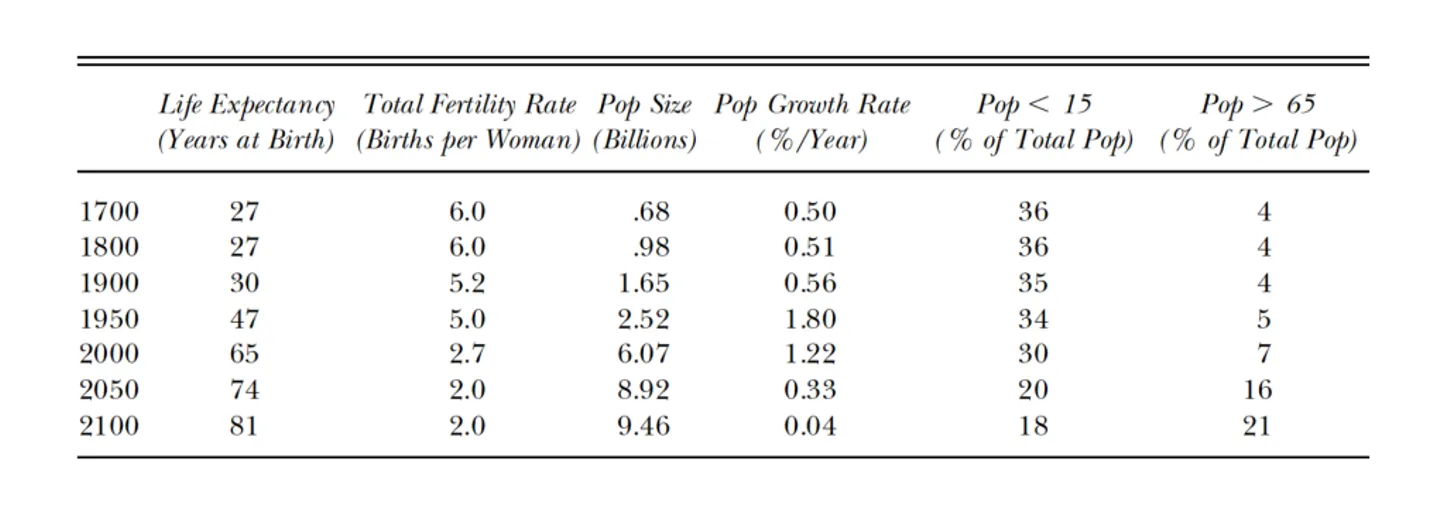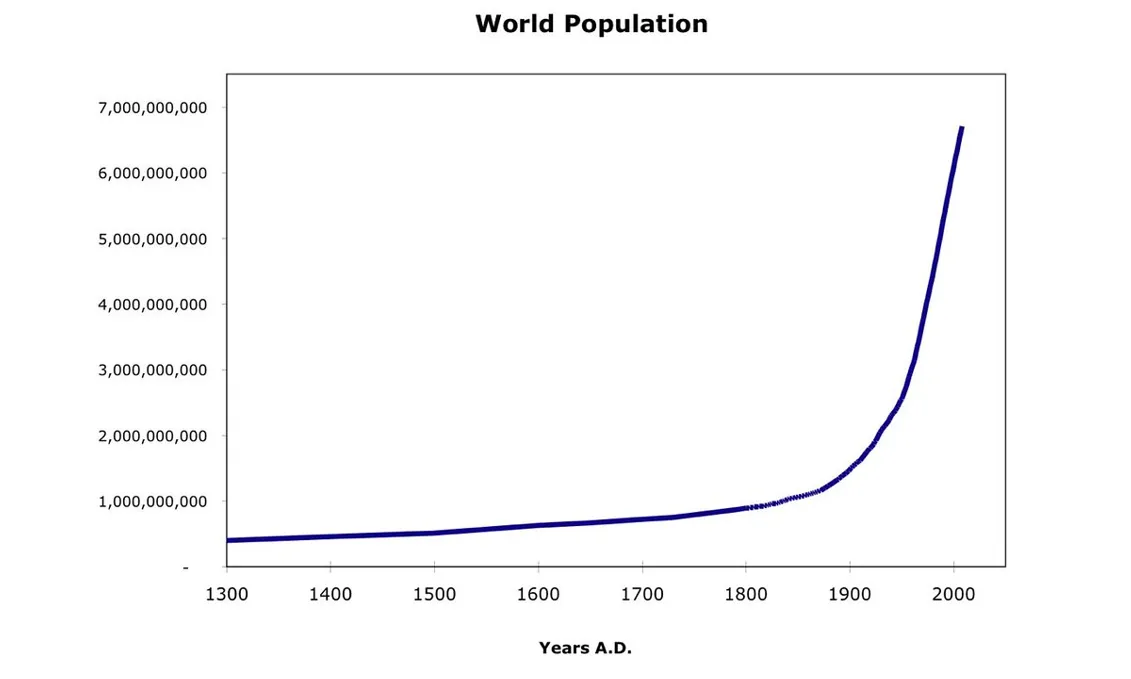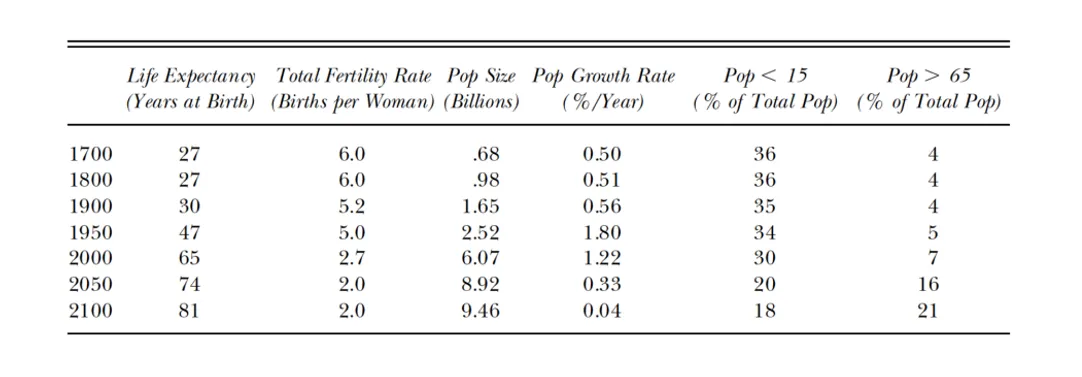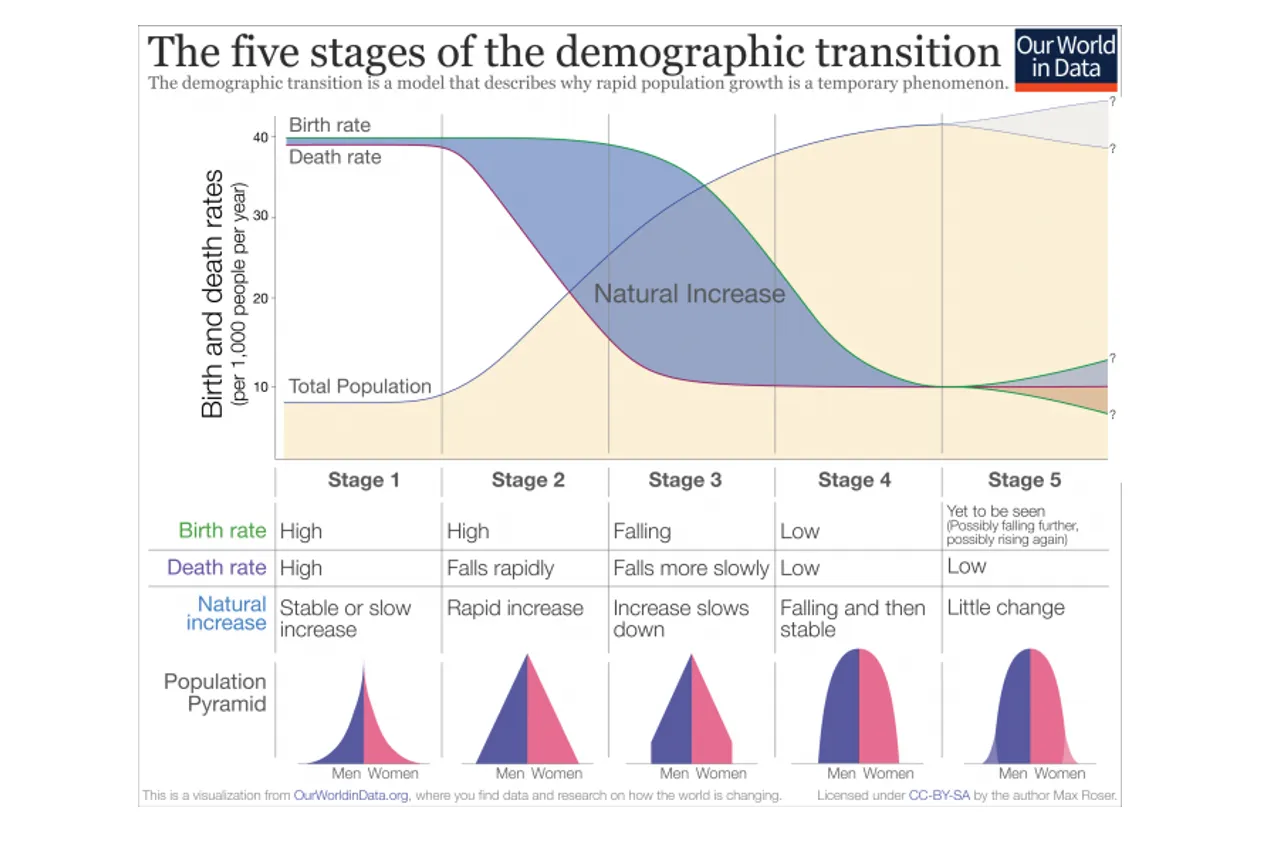
Demographic Transition Model (DTM)
What is DTM? / Definition
The demographic transition model (DTM) captures the relationship between birth rates and death rates in a country. As our society goes through technological changes and economic developments, the population dynamics change from high birth rates coupled with high death rates to low birth rates along with low death rates. The transition is the phase that captures the change to higher birth rates compared to death rates, leading to accelerated population growth.
The Demographic Transition Model (DTM) captures the evolution of population growth through 4 main stages which follow the development and industrialisation of the economy and society. Each stage shows a different relationship between birth rates and death rates based on the economic development stage.
Birth rate: number of annual births per one thousand people
Death rate: number of annual deaths per one thousand people
Table below, from Lee (2003) shows global population trends from the 1700s up to (predicted) 2100s. This process is known as the demographic transition. It starts with low life expectancy (high death rate) and high fertility rates (high birth rates) and transitions into lower birth rate, which eventually leads to very low birth rates and death rates.

Origins of the model
The Demographic Transition Model (DTM) as developed by demographer Warren Thompson in 1929, depicts the transition of a country from high birth-high death rates to low birth-low death rates as industrialisation progresses.
The model is a simplified view of population evolution and economic development, and it can be applied in a historical context, but there are many instances today where it has failed to explain demographic changes and economic patterns.
The Stages of the Demographic Transition Model
Stage 1: Pre-industrial
In this pre-industrial stage, there are high birth rates and high death rates which are fairly balanced, leading to minimal population growth. In this stage, the population is constrained by food supply, as highlighted by the Malthusian theory of the population.
Birth rates were high due to religious reasons, with children seen as ‘economic assets’, high infant mortality, agricultural work, etc. Death rates on the other hand were high due to disease, famine, war, lack of sanitation, etc. The Malthusian theory of the population considers these aspects in more detail.
Example: most of the world was in this stage until late 1700s, with growth rates around 0.05% since Agricultural Revolution. Present day example is Ethiopia.

Stage 2: Industrialisation
In this stage, population starts to increase, as there are higher birth rates and lower death rates, leading to high increases in population. Birth rates continue to be high for the same reasons highlighted in stage 1, but death rates start to decrease rapidly due to technological developments. Technological progress brings with it medical discoveries that reduce infant death, better food supplies and sanitation.
This stage corresponds to the 1780-1880 in the western world. Present day examples of countries currently in stage 2 include many of the least developed countries today like Yemen, Sudan, Uganda, etc.
More examples on development cases in different parts of the world.

Stage 3: Maturing of Industrialisation Process
During this stage, there are moderate birth rates, slowly falling compared to stage 2, whilst death rates continue to decline, but overall population continues to raise.
The most common researched reason for this dynamic is the increase in income from industrialisation process which came prior to the decline in fertility/birth rates. Becker (1960) argued that the decline in birth rates was due to rise in income and the rise in the opportunity cost of raising children: now families and women in particular had to forego a loss of potential income from being employed in a factory every time they would get pregnant.
Becker (1973) also argues that the rise in income led to more investment per child, including childrens' education, health, etc., leading to a decline in fertility.
Some of the other theorised reasons for the fall in birth rates include:
· Increased access to education for women
· Increase in wages
Some of the theorised reasons for the fall in birth rates include:
· Increased access to education for women
· Increased access to contraception
· Less agricultural work, less workers needed
· Lower infant mortality
In European history, this stage corresponds to the historical period 1880 to 1940. Examples of countries finding themselves at this stage in present times are China, Mexico or South Africa.
Stage 4: Post-industrial
In the post-industrial stage, there are both low birth rates and low death rates, running from the 1940s to present.
Additional reasons for the low birth rates are increased levels of education, ever better healthcare and widespread access, higher percentage of working women, along with increased overall standards of living. At this stage families have two children on average. Most north-western European countries are currently at this stage.
There are other stages, 5 and 6, which are currently debated, together with the issues and limitations surrounding the demographic transition model based on recent research and evidence.
Summary
The demographic transition model argues that economic development leads to a transition from high birth rates and high death rates to low birth rates and low death rates.



